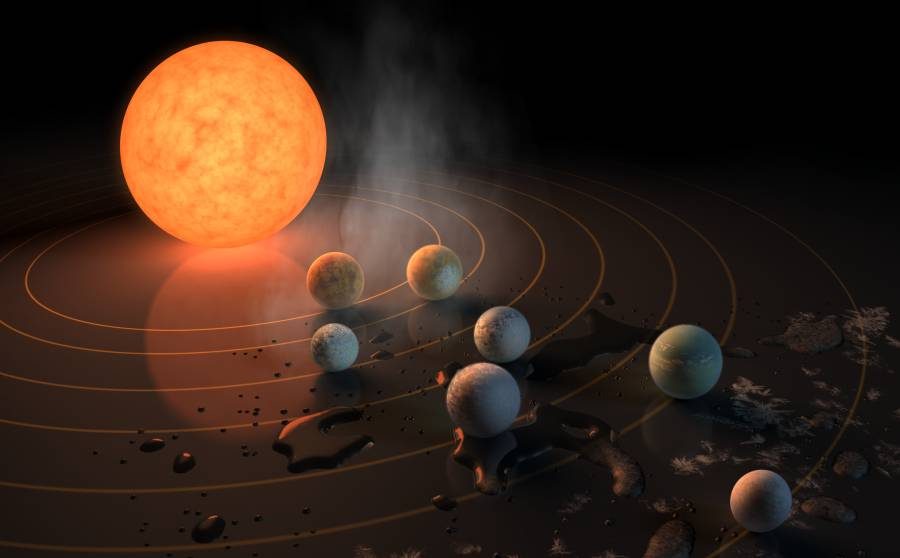TRAPPIST-1 is a planetary system named after the TRAnsiting Planets and PlanetesImals Small Telescope which astronomers used to discover it. It is located 39 light years away from our sun, and experts think the worlds there could have alien life.
The newly discovered system is part of the constellation of Aquarius, and scientists have been studying it since 2016. However, NASA made the official announcement on February 22, 2017.
The star in TRAPPIST-1 is smaller than our sun. It has twelve times less mass. So, planets do not take 365 days to make an orbit around it. “Years” there last about a week by Earth standards.
Astronomers in Chile saw it for the first time using TRAPPIST and confirmed they had found two exoplanets in May 2016. Then, other observatories started looking at the star. Spitzer not only confirmed the previous report but spotted five other worlds for a total of seven planets.
Planets in TRAPPIST-1 are not that similar to Earth
Scientists used the shadow the planets cast when they orbit in front of the star to tell many things about them. For example, they concluded that at least six of them are Earth-size and rocky. So, they expect to find water and biology there. However, their environment is extremely different to the one we enjoy.
The seven exoplanets in TRAPPIST-1 are very close to their star which makes experts believe they are tidally locked, meaning they don’t spin. As a result, it is always daytime in half of the planet while the other side is always dark.


So, even though they all have similar sizes and masses to Earth, their climates are bound to be like nothing we have seen here, and that also applies their inhabitants. Only two of the planets there are in the “habitable zone.” If scientists manage to discover alien life in TRAPPIST-1, it is going to be very different from what we are used to.
These exoplanets are really close to one another. Experts even say that if you were standing on one of them, you could see the mountain formations and clouds from the neighboring worlds with a regular telescope. They would appear bigger than the moon in the sky.
Earth is the weird kid on the block
As far as NASA knows, ultra-cool stars, like the one in the new planetary system, are the most common ones in the universe. That explains why the scientific community is so excited about the finding.
12 parsecs, 39 light years, is relatively close. So, astronomers and other experts can use the technology that is currently available to carry on a decent research on the exoplanets in TRAPPIST-1.
It is important to remember that scientists study the cosmos using the data they obtained from our neighbor worlds. So, whatever they discover in TRAPPIST-1 will serve to study the most common kind of star and planets in the whole cosmos.
NASA is not planning to visit Aquarius, yet
NASA released a lot of media associated with the discovery including videos, VR tours, and some posters. However, the agency has never talked about going there. All the experts agree TRAPPIST-1 is going to be a source of valuable information for many years, but that’s it.
Many observatories around the world will center on the new system including the Spitzer and the Kepler planet hunt mission. The idea is to collect as much information as possible before the launch of the James Webb Space Telescope which will be able to complete the probe.
All in all, TRAPPIST-1 could lead scientists to answer one of the most popular questions in our history: Are we alone in the universe?
Source: NASA / TRAPPIST-1



